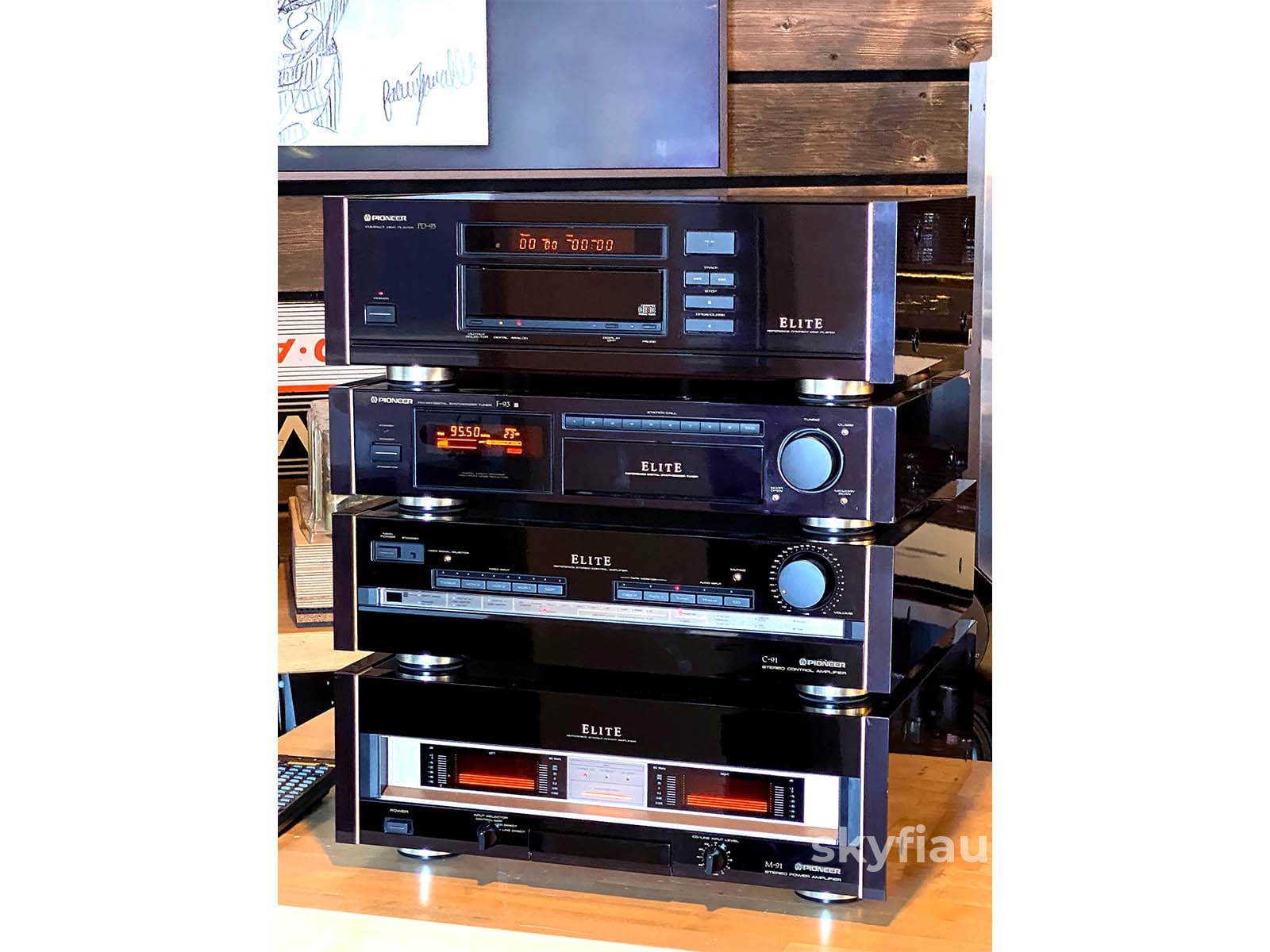
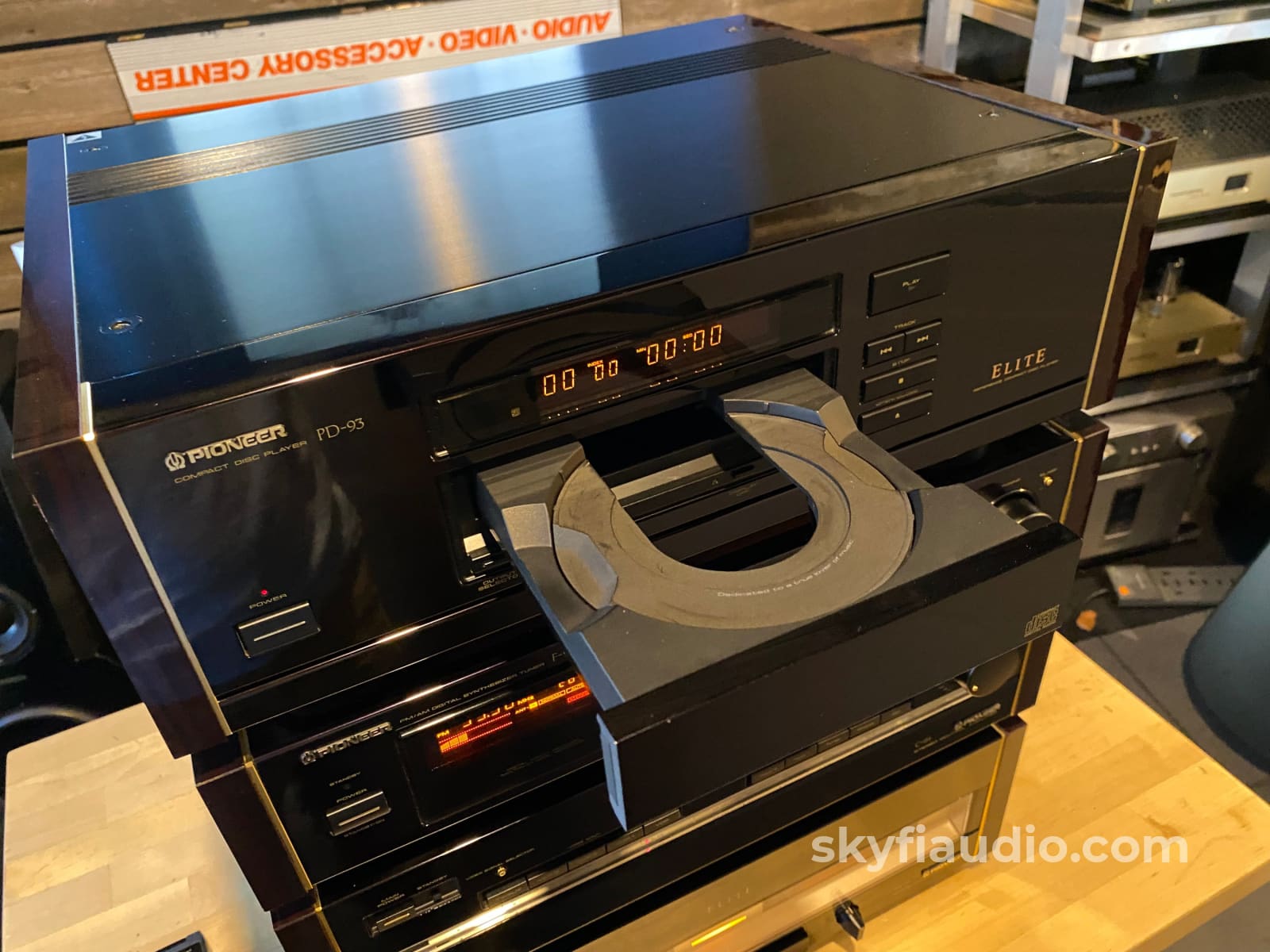
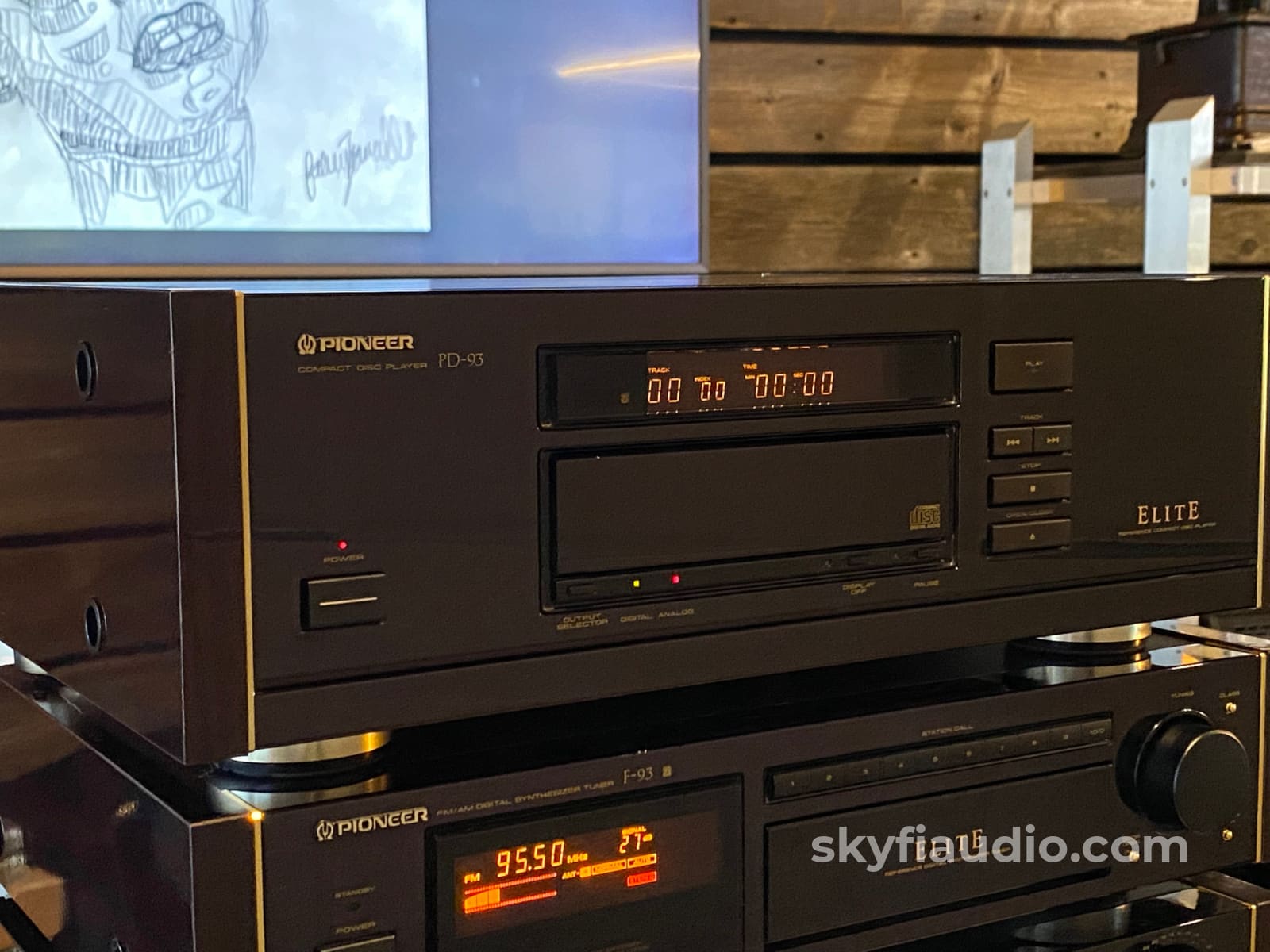
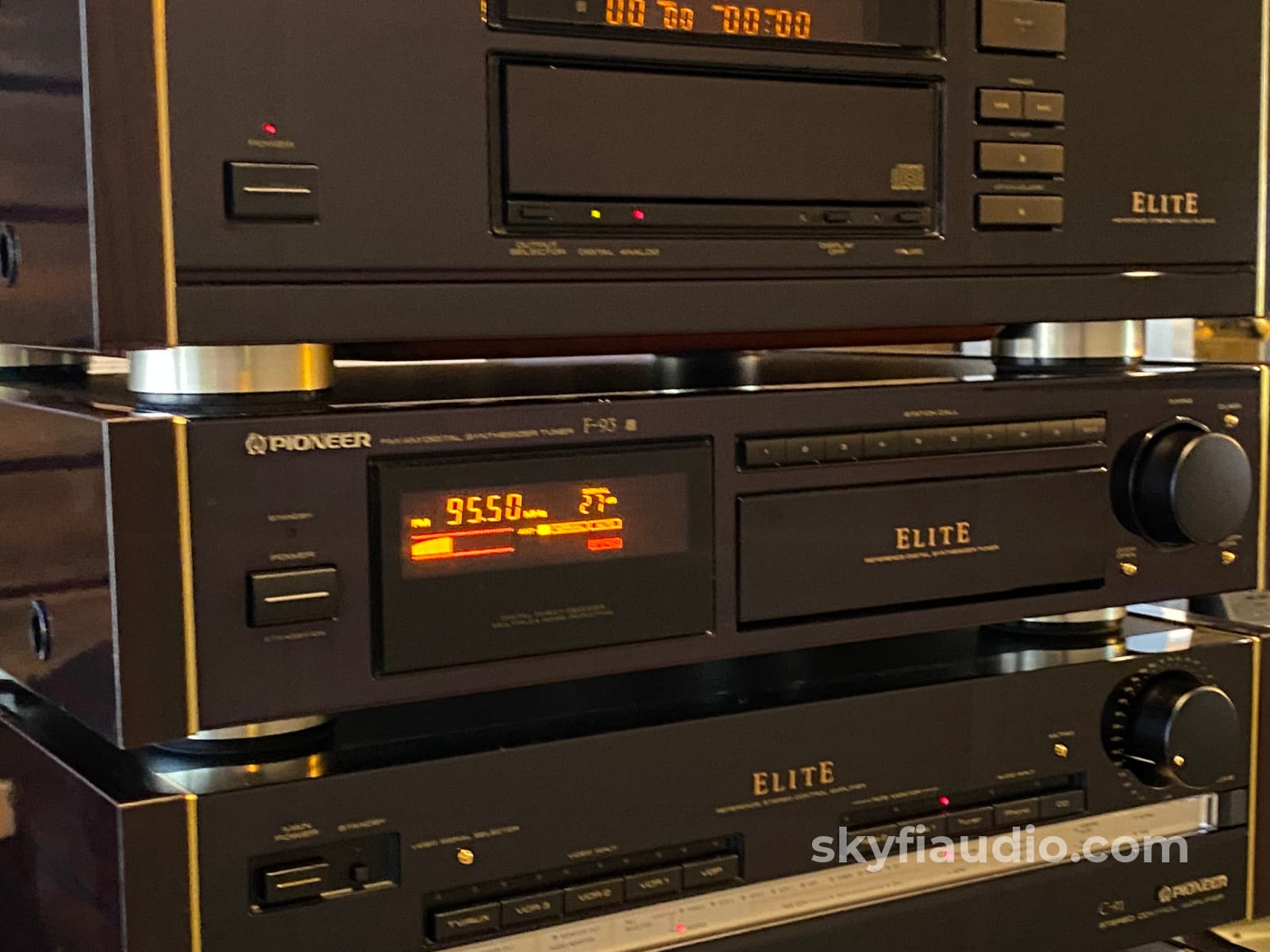
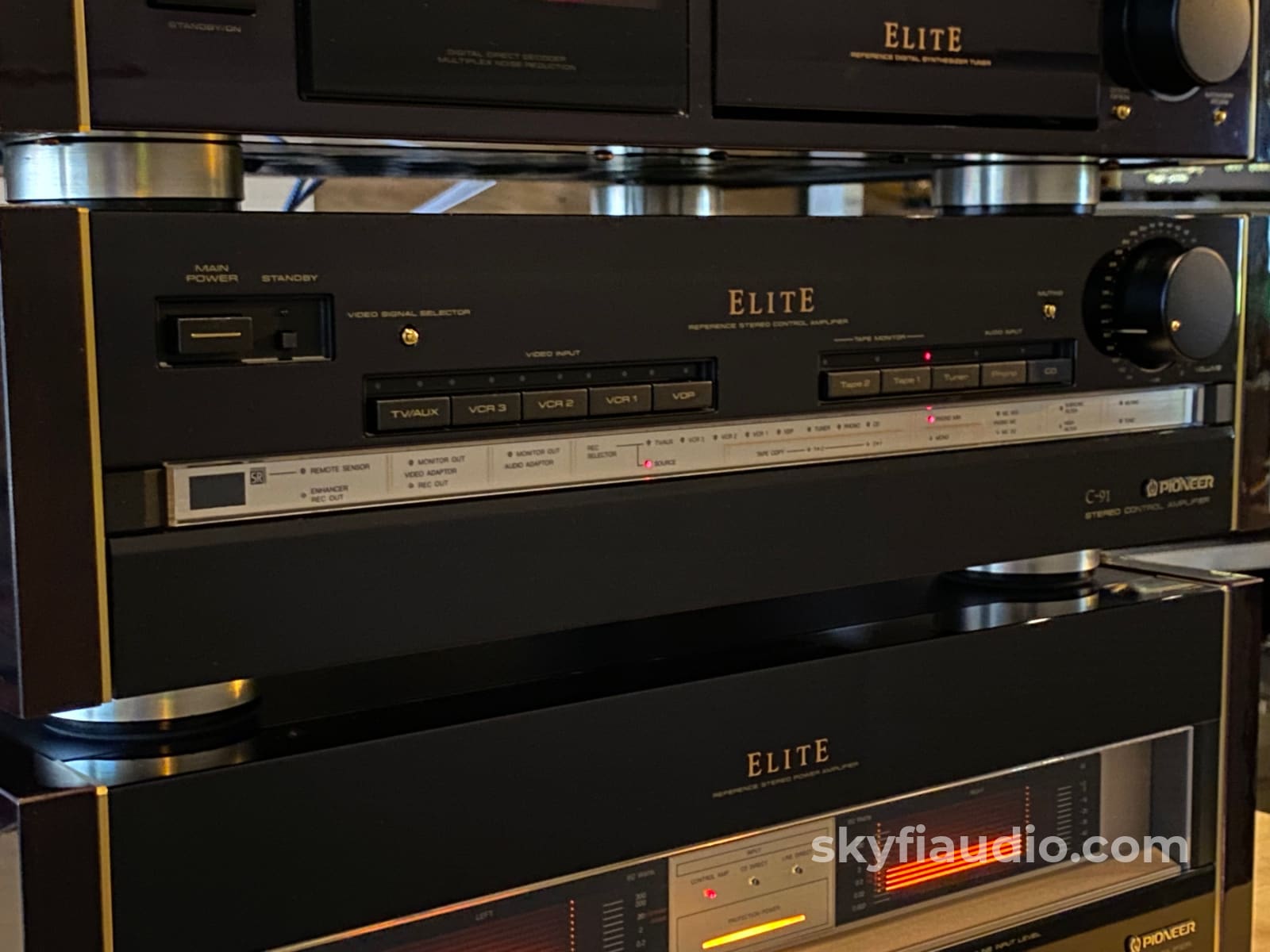
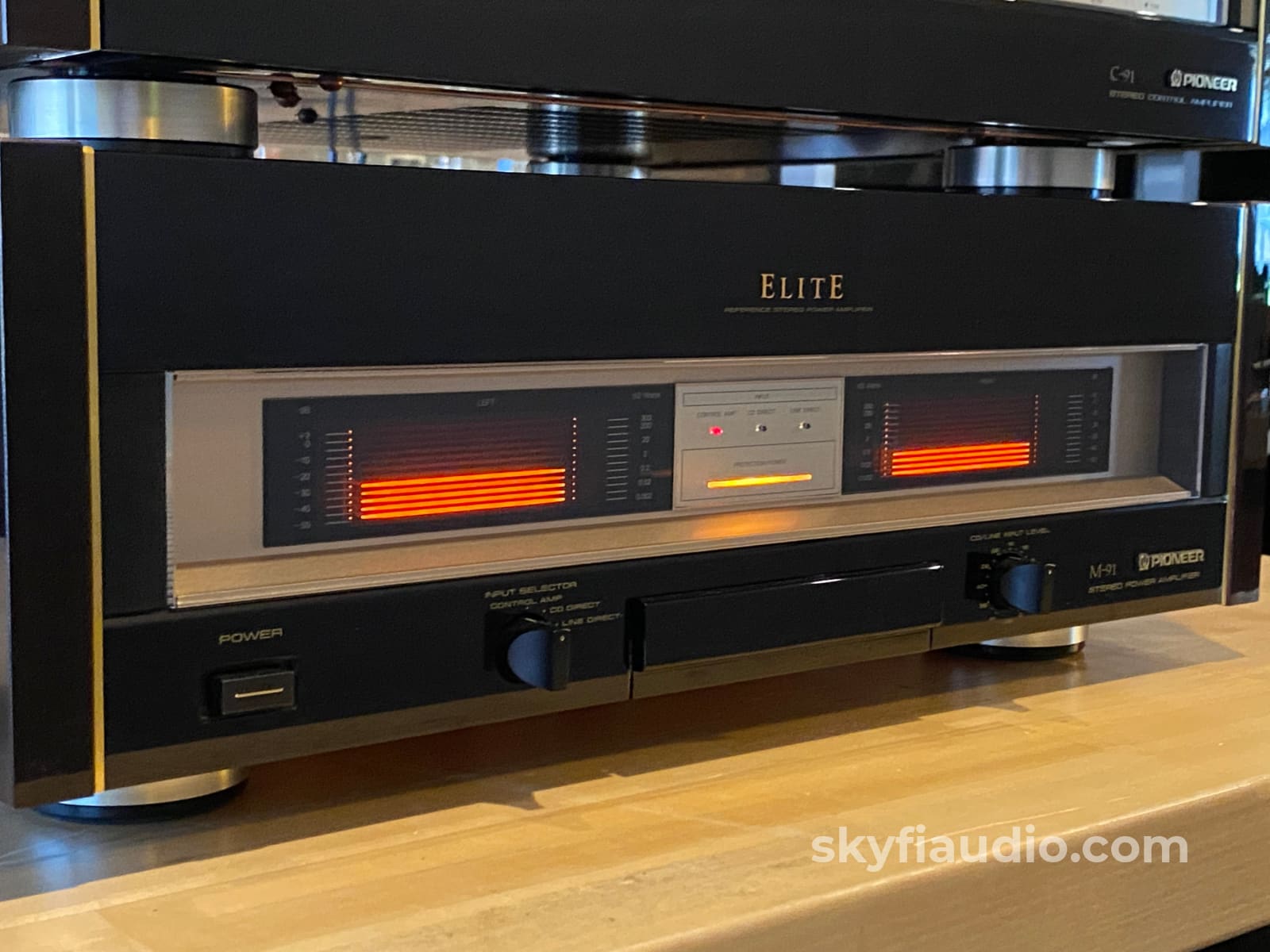
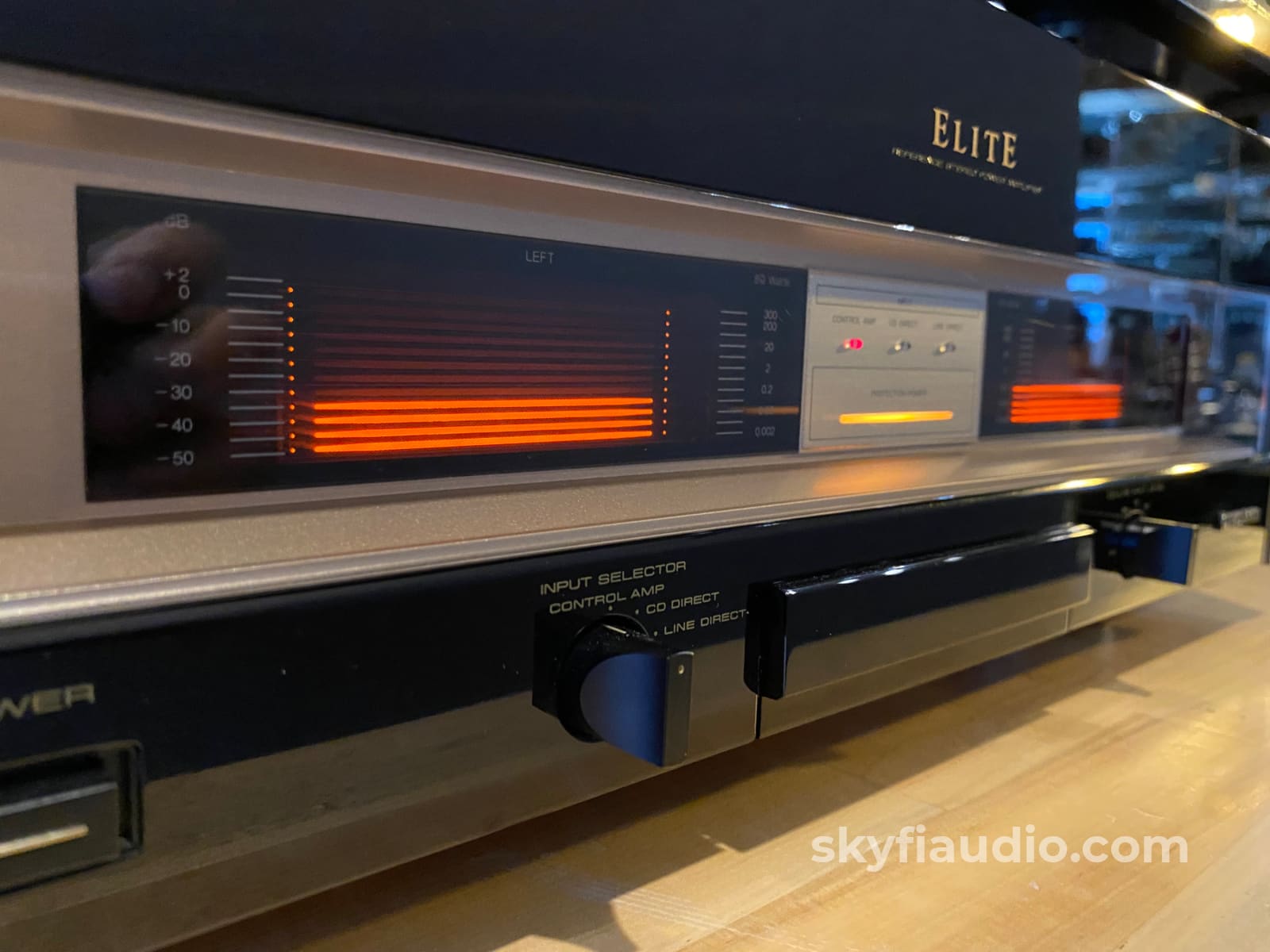
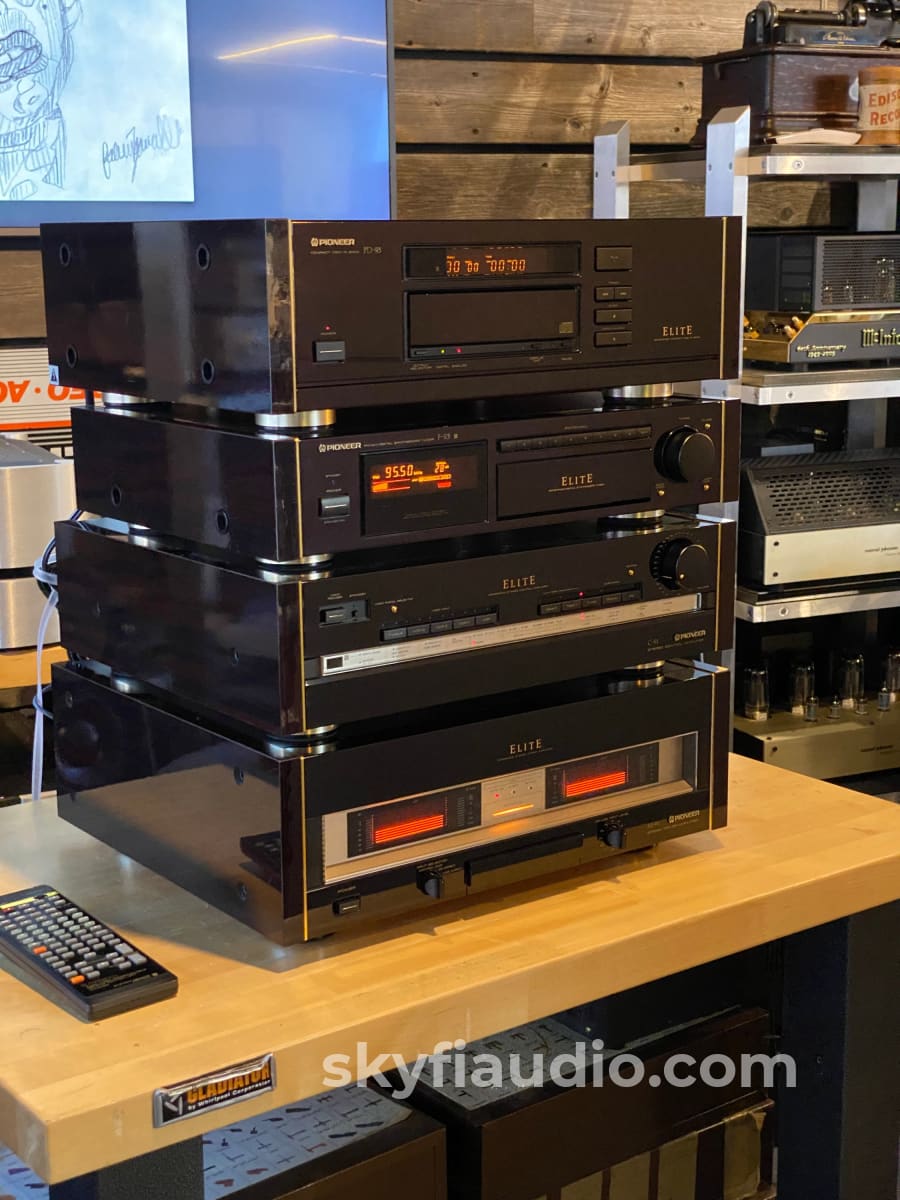
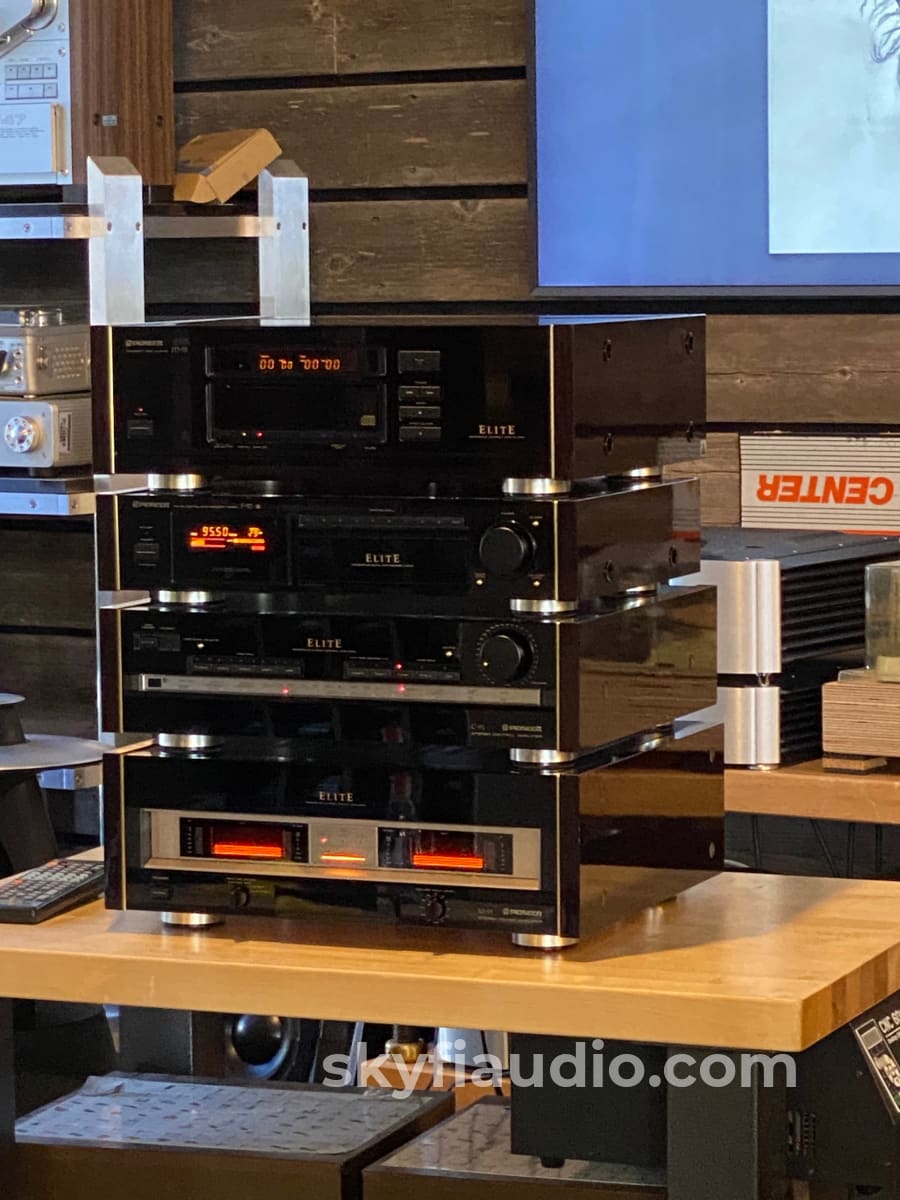
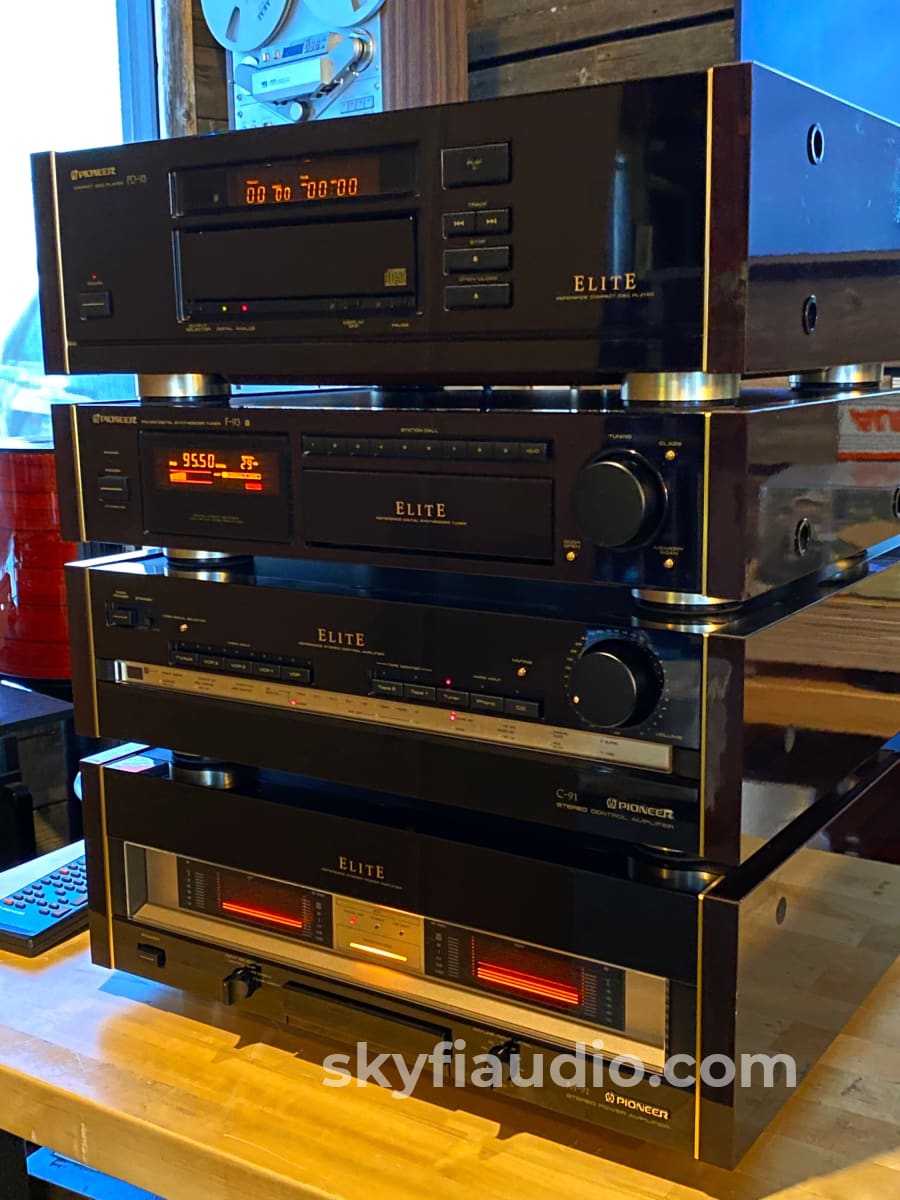
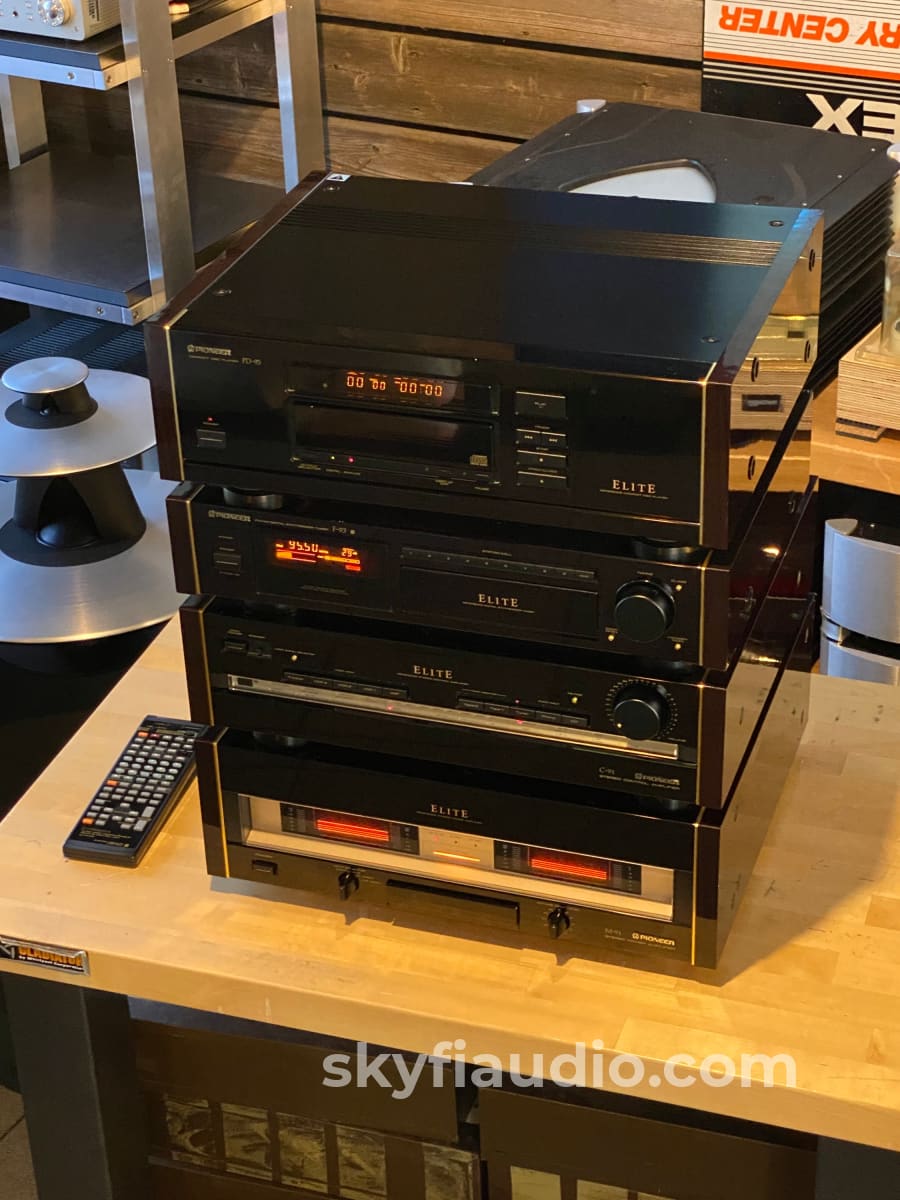


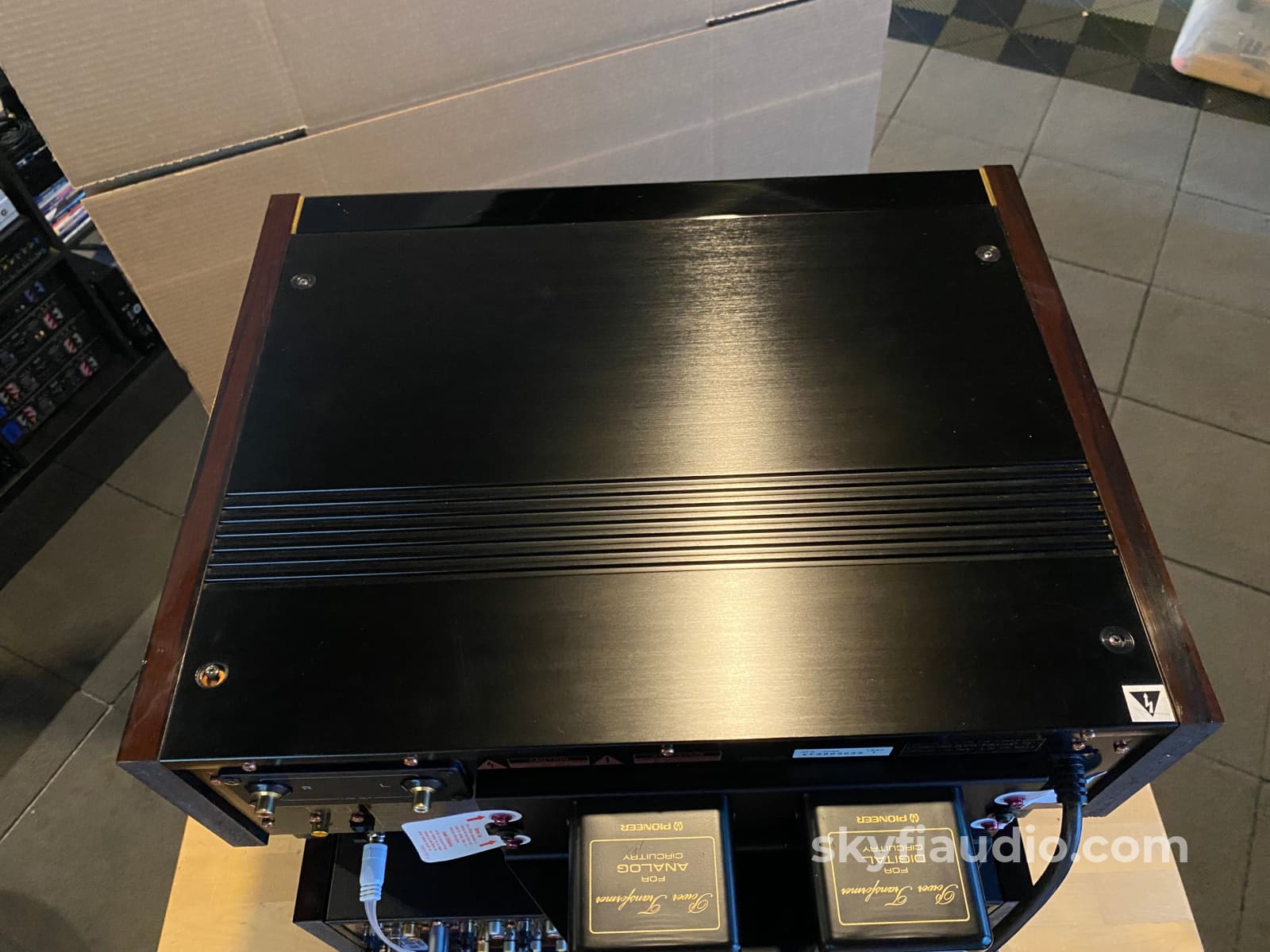
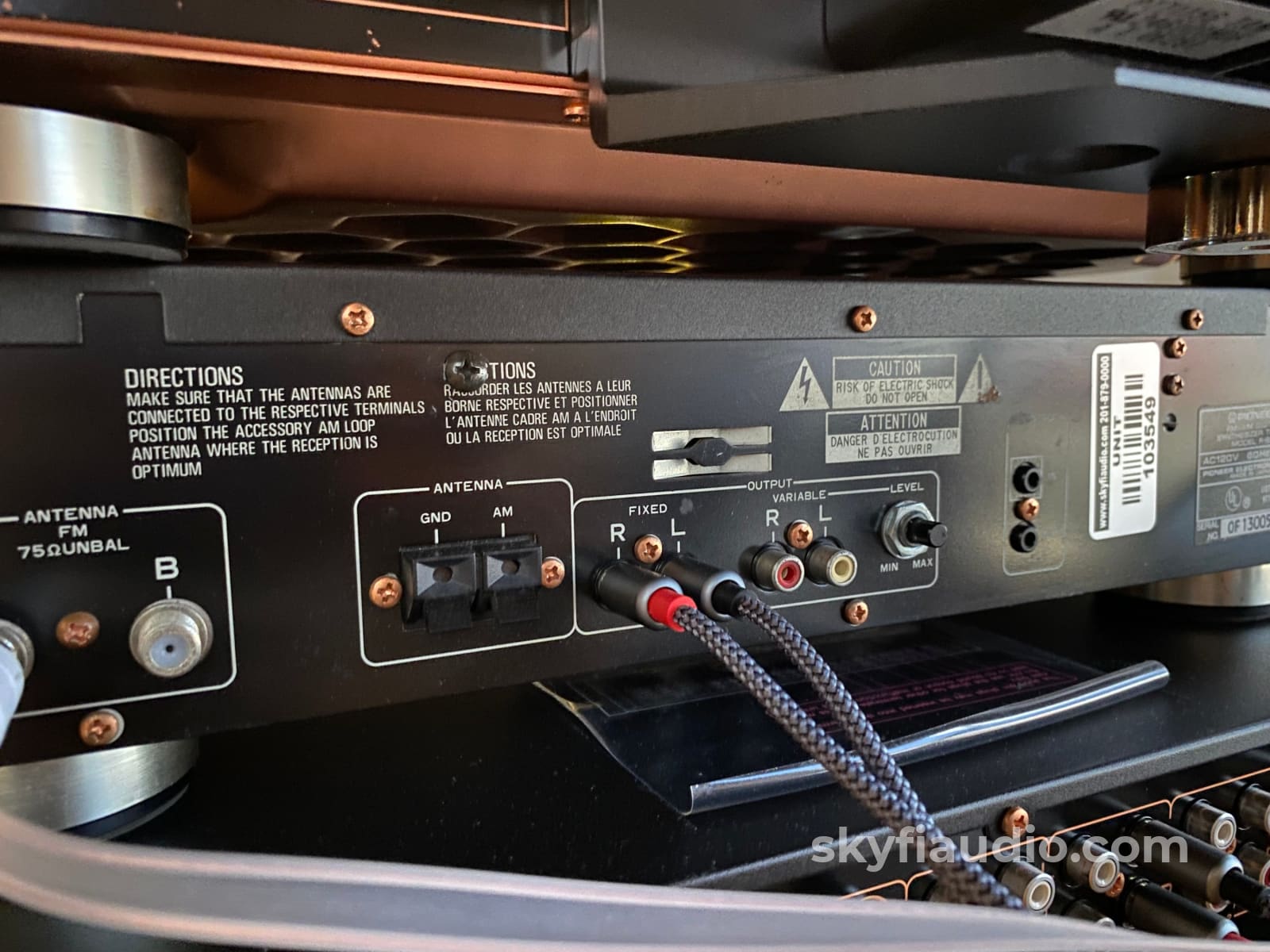
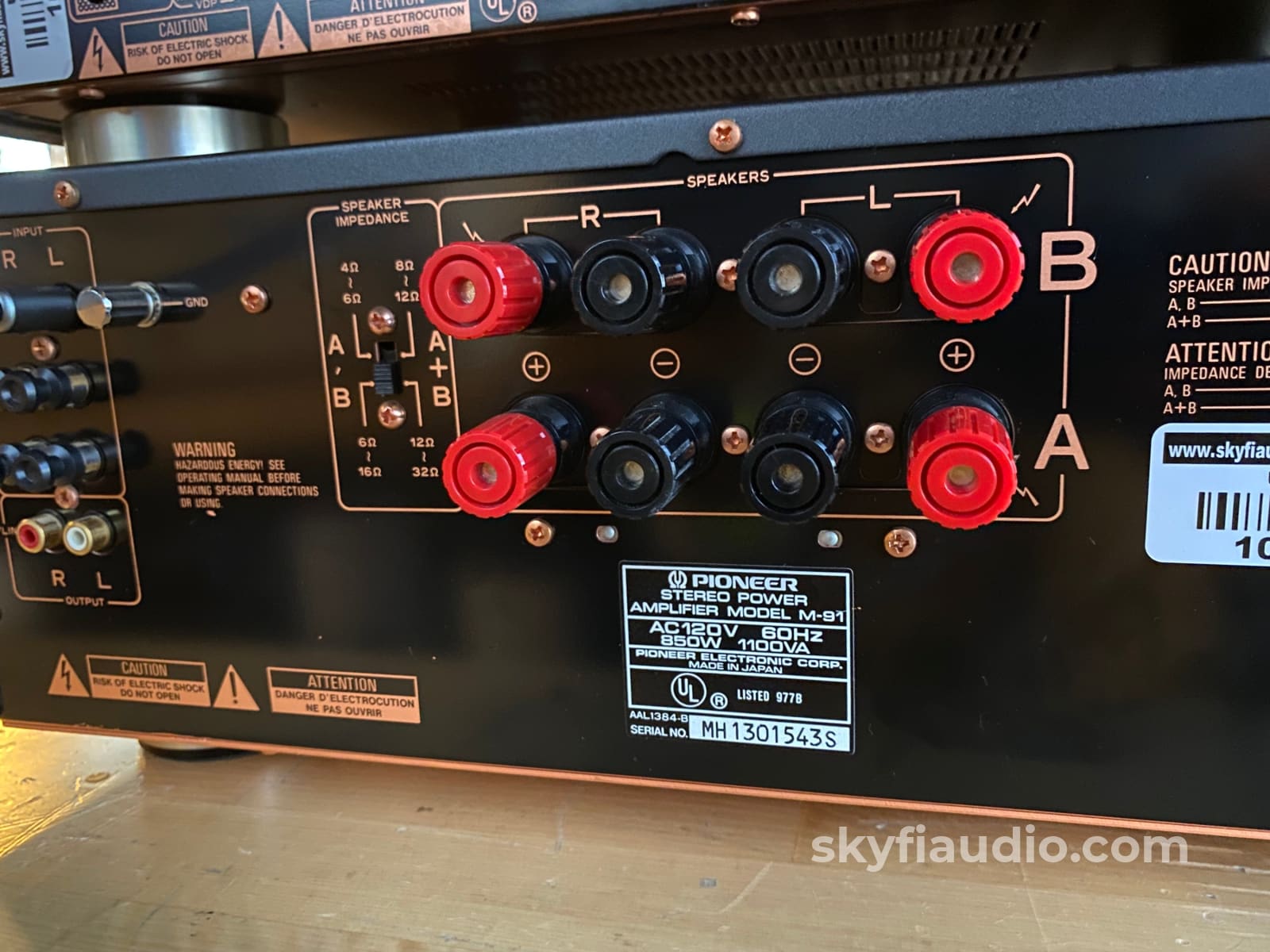
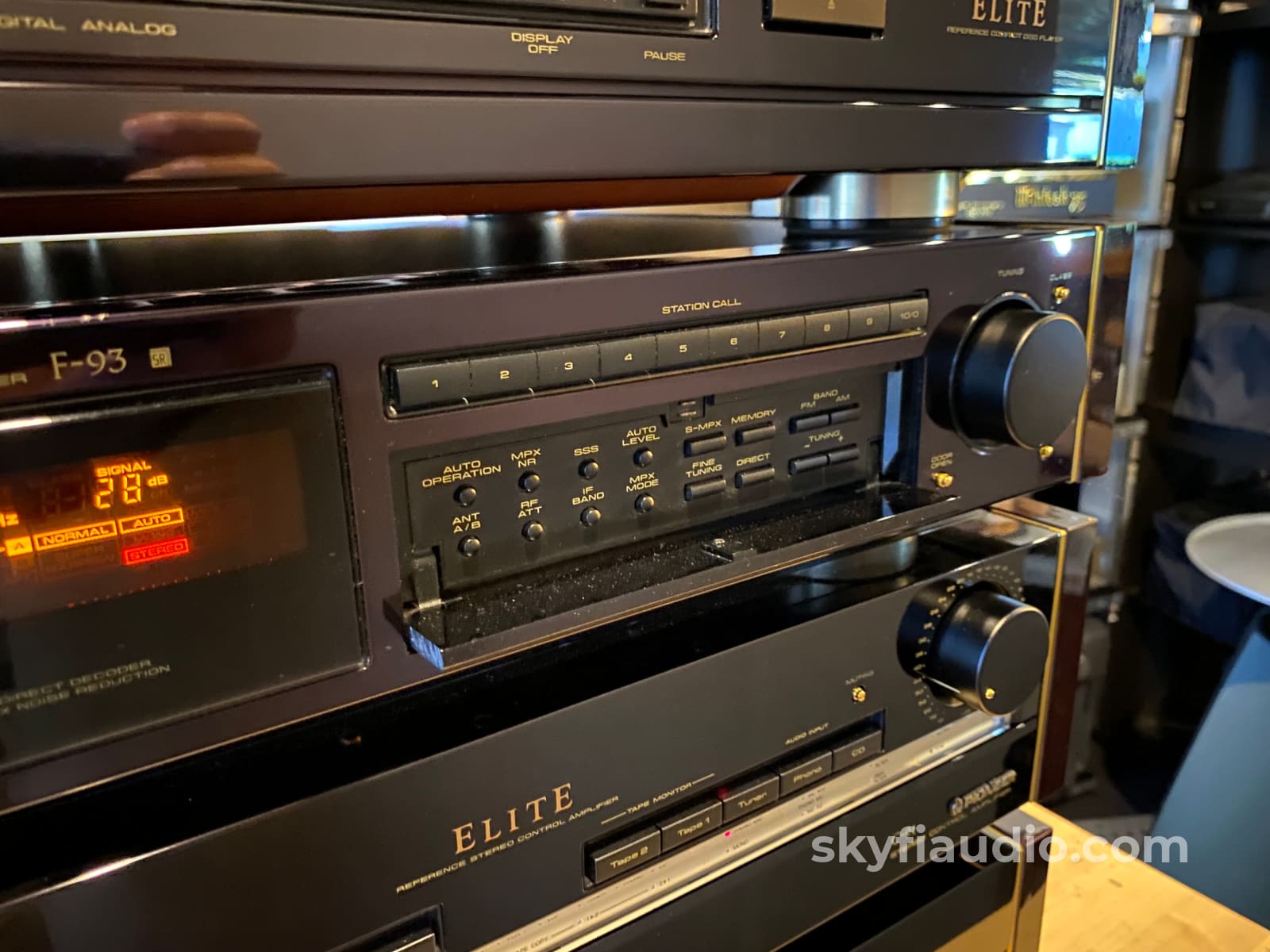
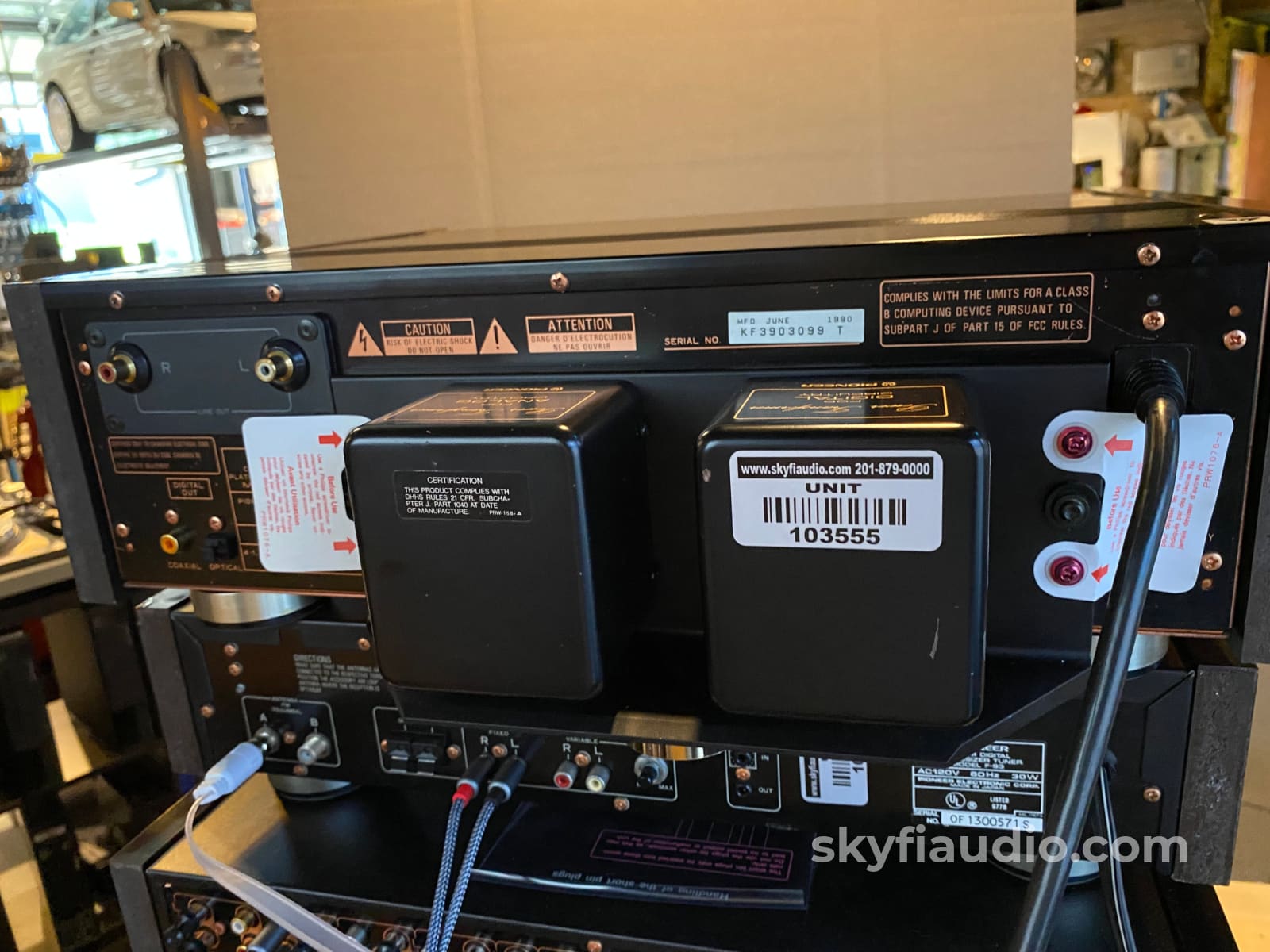
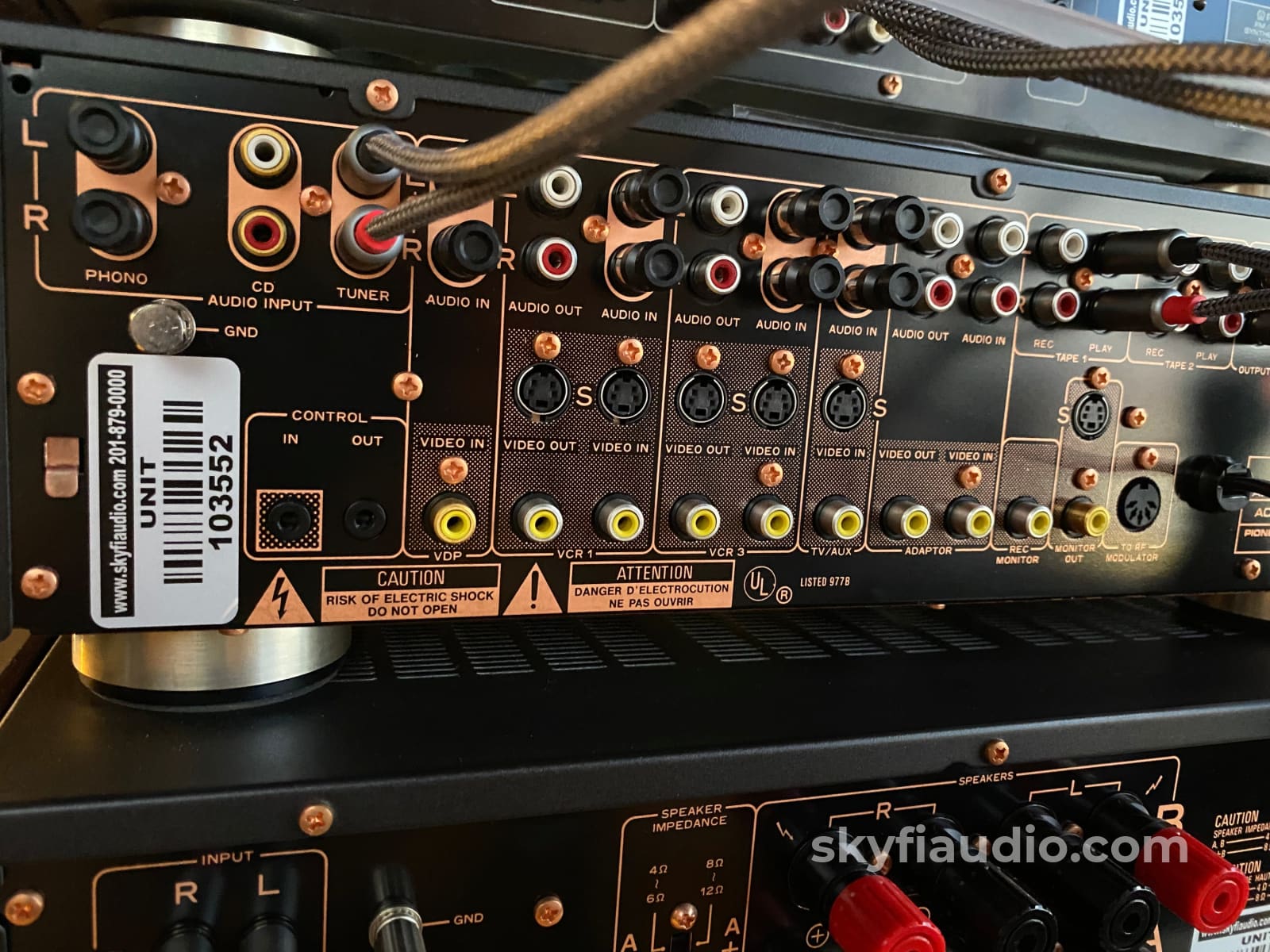
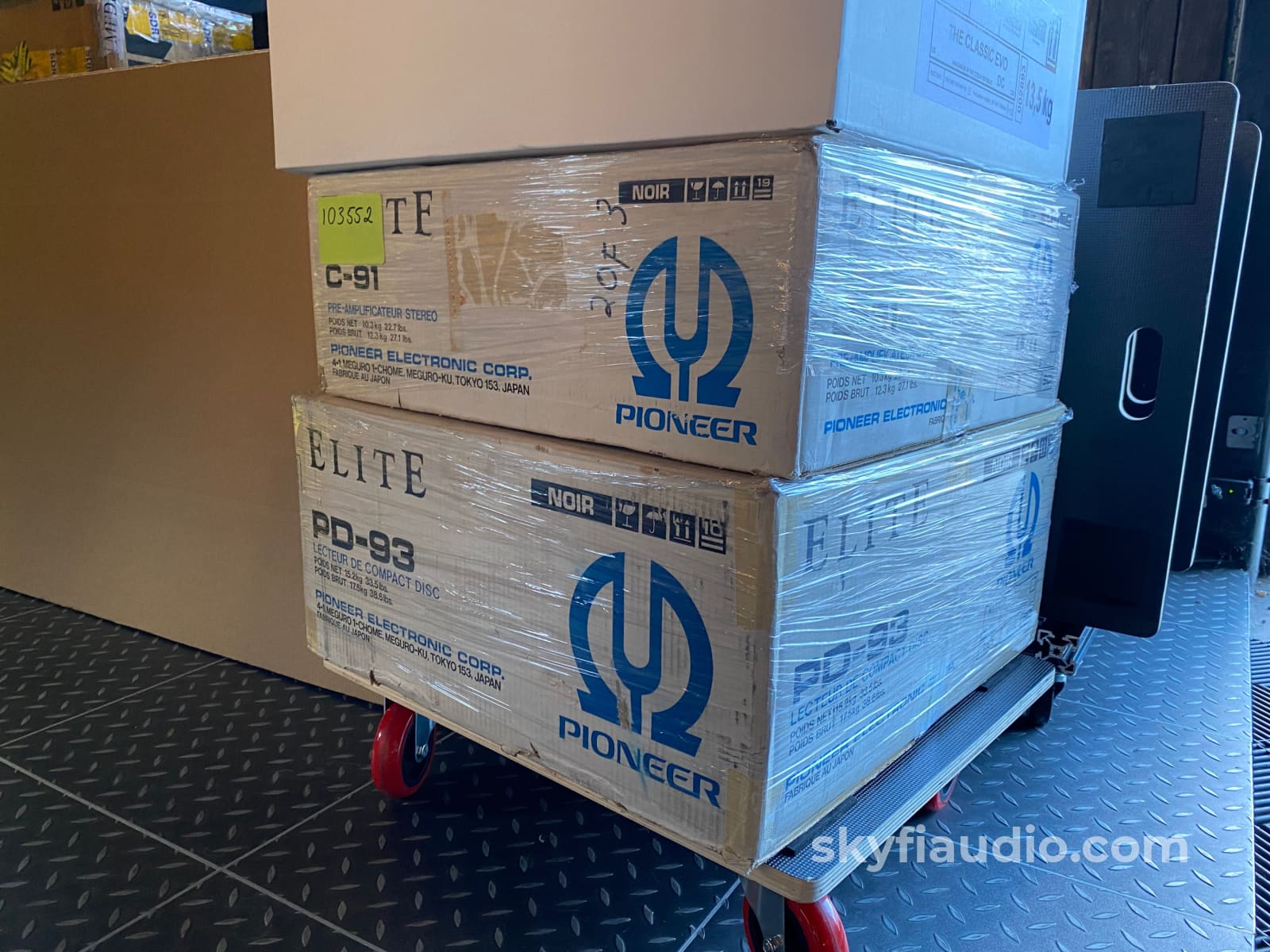
Pioneer Elite Vintage System - Best Elite Preamplifier, Amplifier, CD Player, and Tuner
Free Shipping on Most Electronics - Excludes Speakers and Items Requiring Freight - Contiguous U.S. Only
Pickup available at SkyFi 479
Usually ready in 24 hours

Pioneer Elite Vintage System - Best Elite Preamplifier, Amplifier, CD Player, and Tuner
SkyFi 479
479 South Broad Street
Glen Rock NJ 07452
United States
General:
We've had the pleasure of testing and assembling the best Pioneer Elite system from the early 1990's in our shop.
The complete system is in absolutely beautiful condition - near mint inside and out.
It would take you years of searching to find four of these pieces in this sort of physical condition, let alone working. It's evident that all of these components had very low use and were well cared for.
Best of all each component was thoroughly tested by our in house technician where they passed with flying colors.
This Pioneer Elite system consists of four pieces:
Elite C-91 Preamplifier
Elite M-91 Amplifier
Elite PD-93 CD Player
Elite F-93 Tuner
The Elite C-91 preamplifier is beautifully built and full of great features only found on gear hailing from the 1990's.
The Elite M-91 amplifier is simply gorgeous with its multi-bar flowing fluorescent VU power meters.
The Elite PD-93 is likely the best CD player Pioneer *ever* made. Watch this video from our YouTube channel for all the details including internal construction:
The Elite F-93 tuner was their flagship tuner with great features like dual antenna inputs offering the ability to assign a specific station to an antenna!
All pieces are near mint cosmetically with only the slightest signs of use such as fingerprints, or a light scuff or two on the wood panels.
Packing materials is included for two of the pieces as pictured. Also included is one Pioneer universal remote control which will control all components except the amplifier which never needed/offered a remote option.
Click below to add our recommended matching cables from Kimber Kable, all brand new as SkyFi is an official Kimber dealer.
Kimber Kable - RCA Interconnects - Better
Kimber Kable - Phono Interconnects - Better
Kimber Kable - RCA Interconnects - Best
Kimber Kable - Flagship Tonearm Interconnects - Best
Kimber Kable - Speaker Cables - Better
Kimber Kable - Speaker Cables - Better
Kimber Kable - Bi-Wire Speaker Cables - Best
The SkyFi Testing Process for Preamplifiers:
We start with a visual inspection of all internal components to make sure that there are no signs of heat stress or damage. Capacitors are checked for telltale signs of predictive failure including bulging, shrunken wrappers, or physical leakage. We also inspect the PCBs for discoloration from resistors or transistors that may have been running hot. On vintage units we often spot check select capacitors for value and ESR.
When we first power on a preamplifier we connect its RCA output to a Sencore PA81 Power Analyzer which simulates real world loading conditions and gives us an oscilloscope interface. The first order of business is checking that the volume control works smoothly throughout its entire range with acceptable channel balance. This is accomplished by feeding a 1KHz sine wave into one of the preamp’s line level inputs while monitoring the preamp’s output on an oscilloscope. We then switch to a 1KHz square wave to test the tone controls, loudness function, and filters where applicable. During this step we are watching for equal alteration of the test signal by both channels. This also helps us identify dirty controls that will need treatment. Once the basic line stage functions are verified, we test each input individually. This is especially important for devices that use relays to select their sources. If the preamp is equipped with a phono stage we test that as well. We use an inverse RIAA filter which allows us to feed a reference test signal into the phono input with the proper RIAA equalization and level. A square wave or sine sweep is used to verify that the device’s phono stage is faithfully reproducing the RIAA curve. If the preamp under test has balanced inputs and/or outputs these are tested as well.
We finish up our bench testing with a listening test with our bench amplifier and reference speakers. During this test we check for hum or hiss that may not have shown up in earlier testing. We also check that all of the tone controls and filters perform as expected. If the preamplifier has remote control functions these are also tested. Preamps with tube circuits or complicated power supply topologies are connected at our long term test rig for extended stress testing under real world conditions.
The SkyFi Testing Process for Solid State Amplifiers:
We start with a visual inspection of all internal components to make sure that there are no signs of heat stress or damage. Capacitors are checked for telltale signs of predictive failure including bulging, shrunken wrappers, or physical leakage. We also inspect the PCBs for discoloration from resistors or transistors that may have been running hot. On vintage units we often spot check select capacitors for value and ESR.
If the amplifier passes visual inspection, we move on to a controlled power on sequence using a Sencore safety analyzer to monitor current draw in real time. Once the amplifier is determined to be safe to operate, we connect it to full AC mains for function and power testing. We connect the speaker outputs of the amplifier to a Sencore PA81 Power Analyzer which acts as a dummy load, DC offset monitor, and oscilloscope interface. We start with a low level 1KHz test signal at the amplifier’s input and slowly increase its amplitude while monitoring the output on an oscilloscope for signs of noise, clipping, distortion, or improper channel balance. We continue increasing the signal level until the amplifier reaches clipping. At this point we take an output power measurement and compare it to the spec sheet of the amplifier to verify proper performance. If the device under test has both balanced and single ended inputs they are both tested at this time. We finish off the bench evaluation with a 1KHz square wave check and a 20Hz to 20KHz sine sweep to assess the amplifier’s frequency response characteristics. This battery of tests will usually reveal if the amplifier has any issues that need further attention.
Before the device leaves the bench, we perform a listening test with actual music using a variety of preferred test tracks. Our benches are outfitted with familiar monitor speakers which help us identify inconsistencies that will not always show up on our test gear. The main things that we are listening for are hum or noise with no signal present, proper center image, clicks, pops, or any other obvious undesirable audio characteristics.
If the unit passes all of these tests it is moved to our long term testing rig where we simulate real word operating conditions for 6-8 hours. This allows us to monitor the unit for signs of thermal runaway or intermittent issues that only crop up when the unit has fully come up to temperature.
The SkyFi Testing Process for CD Players:
We start with a visual inspection of all internal components to make sure that there are no signs of heat stress or damage. Capacitors are checked for telltale signs of predictive failure including bulging, shrunken wrappers, or physical leakage. We also inspect resistors and other passive components for signs of overheating. When the unit is first powered on we check the drawer mechanism function.
After the visual inspection we connect the CD Player’s RCA outputs to our Sencore PA81 Power Analyzer which simulates a real world input impedance and allows us to monitor the output on an oscilloscope. We start with a test CD with precision test signals to verify proper output on both channels. If the CD player has balanced outputs these are also tested at this time. If this check passes, we move onto evaluation with actual music CDs. We listen for clicks, skips, and drops during playback. At this time we also check the transport functions including skip, ff, rw, play, pause, repeat, and programming if applicable. If the unit has a remote control, all remote control functions are verified.
If the CD player is capable of SACD playback we test its ability to read SACD layers on multiple discs including standard and hybrid SACDs. At this time we also check the unit’s digital outputs where applicable. If SACD layers are being properly read we should see the digital outputs mute during playback. On redbook CD playback we verify that each digital output maintains proper lock on our bench DAC.
After bench testing is completed, CD players are set up for testing on our long term test rig. During extended testing we make sure that unit can play through several different discs from beginning to end with no skips or lock ups.
The SkyFi Testing Process for Tuners:
We start with a visual inspection of all internal components to make sure that there are no signs of heat stress or damage. Capacitors are checked for telltale signs of predictive failure including bulging, shrunken wrappers, or physical leakage. We also inspect the PCBs for discoloration from resistors or transistors that may have been running hot. On vintage units we often spot check select capacitors for value and ESR. Vintage analog tuners also have moving parts related to the tuning gang and dial string. These parts are inspected for smooth operation.
If the unit passes visual inspection it is bench tested for a handful of key performance parameters using a Sencore SG80 AM/FM Stereo Analyzer. The SG80 allows us to “simulate” an ideal radio station using precision test signals instead of music. This device, in conjunction with an oscilloscope allows us to properly evaluate the following parameters:
1. AM Reception (Where Applicable)
2. FM Mono Reception & Tuning Meter Function
3. FM MPX Reception (Stereo)
4. Dial Tracking - How accurately the tuner dial or display indicates the actual frequency of the broadcast being received.
5. Stereo Separation - A properly working stereo tuner will have minimal crosstalk between the left and right channel.
6. Sensitivity & Signal Strength Meter Function - By lowering the output of the SG80 we can simulate weak stations and determine how well the tuner will be able to pull in weak distant stations. This adjustment also helps us verify signal strength meter function.
If the tuner has acceptable performance related to the parameters above we connect the unit for listening tests with a simple dipole antenna. We listen for audio reproduction quality of local stations and evaluate how many stations the tuner can receive while we sweep through the dial. We are looking to verify that the tuner can decode stereo on strong local broadcasts and pick up a wide variety of local stations at the bottom, middle, and top of the frequency band. At this point we also test convenience features such as muting, filters, built in oscilloscope function, etc.
We finish up with an extended listening test on our long term test rig. We tune in a strong local station and monitor for drift over a 2-3 hour period.
|
Item |
Included |
|
Original Box |
CD + Pre Only |
|
Manual |
Not Included |
|
Remote |
Yes - Main System Remote |
|
Cables |
Yes - Power Only |
|
Physical Condition |
8 / 10 |
|
Working Condition |
10 / 10 |
Choose options
